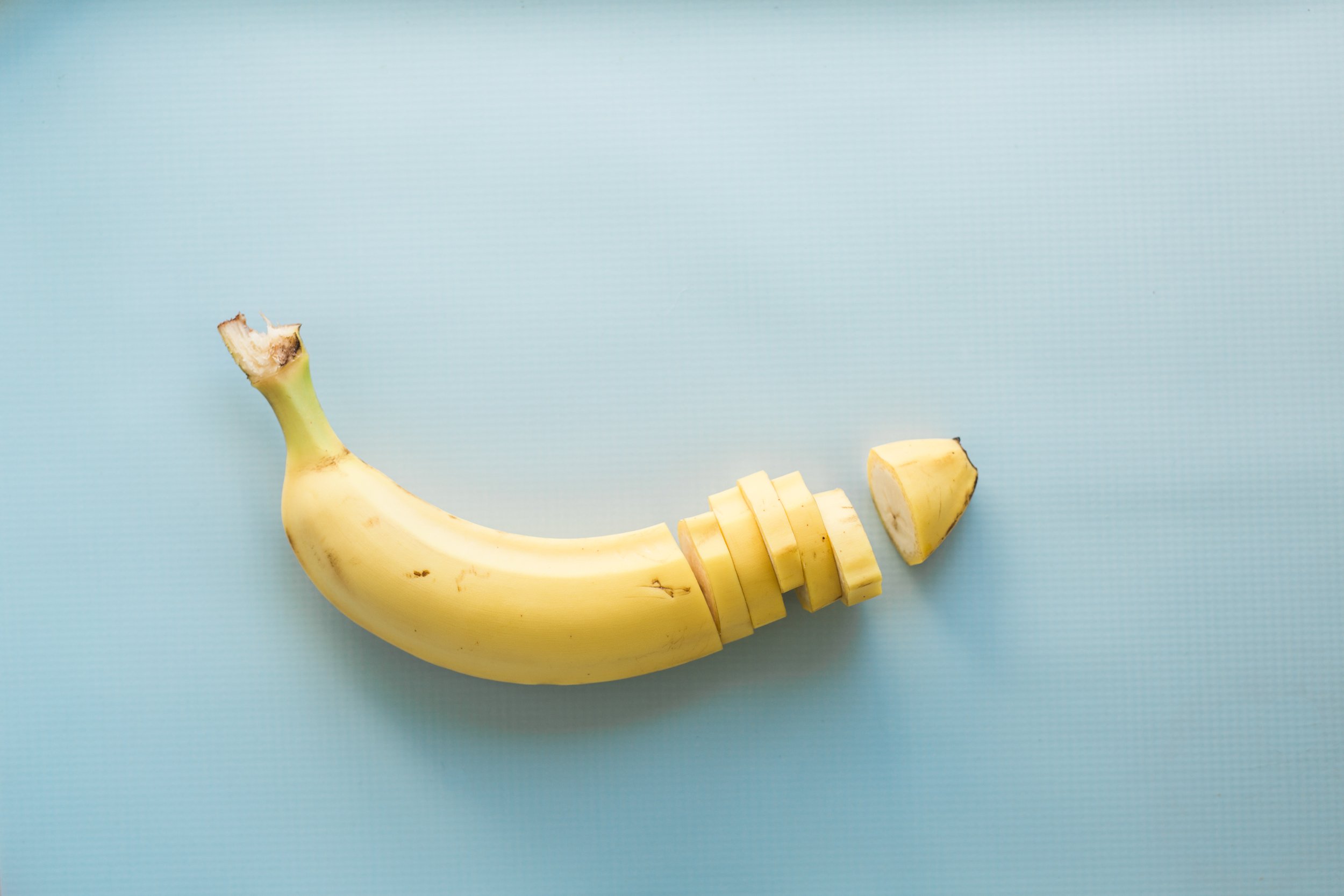We all know the importance of prioritizing fresh foods for a healthier diet, while it’s also nice to have the convenience of having frozen options readily available.
While pantry items and frozen dinners offer ease and convenience, fresh groceries bring essential nutrients that our bodies crave. However, they require an extra level of attention in terms of storage and preservation.
In todays blog, I’ll help you find the perfect balance by learning how to extend the lifespan of your groceries and identifying which items can be safely frozen for future use.
Let’s start with the fresh produce you are buying this week and already have on hand.
If you want your groceries to last as long as possible in your fridge:
Make sure you're buying them fresh in the first place.
Pay attention to the "best before" dates at the grocery store.
Make sure the fruits and vegetables are not overly ripe when you purchase them unless you want to use them right away.
Avoid green veggies that are already starting to wilt, buy slightly greener bananas, and watch out for wrinkly bell peppers.
Certain fruits and vegetables go bad quickly when they absorb moisture that collects in the fridge. Line your veggie drawer with a few paper towels to absorb any excess moisture and keep your food from spoiling. Leafy greens, berries, and other fruits and vegetables with high water content are especially sensitive to moisture. Make sure you don't pre-wash these foods— even though it might cut down on meal prep time, it will shorten their life span. Mushrooms are usually purchased in a sealed container, but moisture can collect and make them slimy and brown. Store them in a paper bag or put them in a container lined with paper towels instead.
Keep the apples and bananas away from other fruits and veggies. These fruits release ethylene gas, which is a compound that makes other ethylene-sensitive produce ripen more quickly. So, although your fruit bowls look put together, they're not keeping your fruits fresh. If you're storing apples in the fridge, put them in a sealed plastic bag. Avocados, tomatoes, and pears also produce higher levels of ethylene gas and should be stored separately.
Put your fresh herbs in a jar of water outside of the fridge, like a bouquet. Green onion also lasts much longer this way and will even grow new tops! This will expand the lifespan of your herbs by weeks.
Keep your bananas together in a bunch— separating them will make them ripen much faster. It helps to wrap the stem in plastic wrap to keep them from accidentally separating. Sometimes bananas come in a plastic bag from the grocery store. If this is the case, throw it away when you get home. Bananas need good air circulation to last long. If your bananas become overly ripe, peel them and store them in the freezer.
Store potatoes and onions in a cool and dark place, such as the basement or cellar, but don't put them together. Onions also release ethylene gas that will make your potatoes rot quickly. Onions and potatoes can last for weeks in a cool and dark room, but they don't do very well in cold refrigerators or warm temperatures.
Now let’s shift to freezing some foods to eat later. Whether you have foods starting to turn brown before you have a chance to eat them (bananas) or if you bought too much, or if you want to get prepared for the winter ahead, then freezing some produce is a great next step.
This helps to reduce food waste, have food on hand for your next meal, save money by shopping when food is in season, and having some healthy options to toss into a quick meal on a busy day.
There are several foods, sauces, fruits and vegetables you can freeze before it expires to use at a later time.
1. Fresh herbs
Whether you have an abundance of herbs growing, or you need to bring them inside before winter comes, this is a great item to freeze. It’s simple- chop up what's left up and add a little olive oil to it, put into ice cube tray and put in the freezer. Then pop one out whenever you want some extra flavor for your meals. This works for all your fresh herbs- from basil, to thyme and rosemary. You can mix and match or keep it separate- however you like.
2. Tomato paste or sauce
How many times have you forgotten about that little bit of it hiding in the jar in the back of your fridge? The next time you use tomato paste or sauce but only have a tiny bit, take it and put it in the freezer so you can put it to good use next time. This is another great way to utilize an ice-tray to keep things organized.
3. Broth or stock
Whether you use veggie, chicken, or beef broth or stock, don't forget that carton with a little at the bottom. Freeze it in an ice tray, and next time you need some with your recipe, you can drop in your frozen cubes of it to add more flavor to sauces and gravies.
4. Yogurt
Ever bought yogurt only to realize it's going to expire before you have the chance to eat it all? Good news- yogurt freezes well. Dairy-free yogurt, as well, if you're dairy-free. There are loads of different almond or coconut milk yogurts you can still enjoy. And it's a delightful frozen treat too, not to mention easier to add into your smoothies.
5. Fresh-squeezed juice
If you have a juicer but never feel like whipping it out for just a small batch, there's good news. Make as much as you want, then put it in your freezer. Thaw it out for when you want it, or like the yogurt, use it for your smoothies.
6. Avocado
Don't let that avocado go to waste! Next time you have an abundance of avocado and need to salvage it before it goes bad, you can either 1) make a large bowl of delicious guacamole, or 2) freeze it. Freeze the avocado after it's been washed and cut in half. Seal it in an air-tight container or a ziplock bag and pop it in the freezer. Once it's thawed, it will no longer be firm, but they're perfect to use in sauces/dips or in your smoothie.
7. Broccoli
Broccoli when frozen retains its nutrients, losing less ascorbic acid in your freezer than it does when waiting for you in your fridge. Steam it for a quick side dish, make stir-fry, or top it on a fresh-made pizza. Soups, frittatas, and pasta dishes are other great ways to use frozen broccoli.
8. Peas
They’re not just a handy icepack when you have a bruise or sprain. Frozen peas are a fantastic addition to your meals and far easier to work with than fresh peas. They still retain their initial nutrients, too, hosting more beta-carotene than fresh or canned versions. Steam or thaw them first before you add them to your dishes. They go great in a brown rice bowl, are perfect for salads and pasta, and make a great soup with peas thrown in.
9. Spinach
Having frozen spinach on hand is super handy. Plus, it has even more beta-carotene than raw spinach. It’s an easy side dish for a busy night all on its own, but feel free to get creative with soups, pasta, curries, dips, or even on top of white pizza. I like to toss some frozen spinach into my smoothies as well!
10. Organic Berries
Berries are marvelous super-fruits, but they are always ranked as the dirtiest by the EWG. So when buying berries, please choose organic when possible. When they are in season, buy them to freeze for later, OR choose organic frozen berries at the grocery store- as they will be less expensive than fresh. Frozen berries can make wonderful smoothies, top off your coconut yogurt, or use them in healthy desserts.
11. Peaches
Peaches still retain phenolic compounds when frozen, and they still taste just as amazing. This is another great one to buy fresh, chop up, freeze to have on hand for later. Thaw them out to put on your coconut yogurt, puree into a healthy pudding, or add to salads with walnuts and goat cheese. (my mouth is watering just thinking of peaches right now!)
12. Carrots
Carrots are not usually hard to come by fresh, but freezing some can be helpful for a busy day. They are still full of nutrients when frozen and they store easily in the freezer, so be sure to keep some on hand for a stir fry or side dish.
13. Bell Peppers
Frozen bell peppers are perfect for a stir-fry or fajitas, they freeze well and are loaded with nutrients even when frozen.
By having a plan to make your fresh foods last longer, as well as having the convenience of frozen options on hand, you can strike a perfect balance in your kitchen.
From properly storing fresh produce to freezing herbs, tomato paste, broth, yogurt, and more, you can reduce food waste, save money, and have nutritious options available for future meals.
Incorporate these tips and experience the advantages of both fresh and frozen ingredients in your cooking so that your kitchen will flourish with freshness and efficiency.
Enjoy!
Looking for summer recipes? Check out my Nutrition and Wellness Library.
Inside you will find meal plans, healthy recipes and so much more. Sign up now- it’s free!





